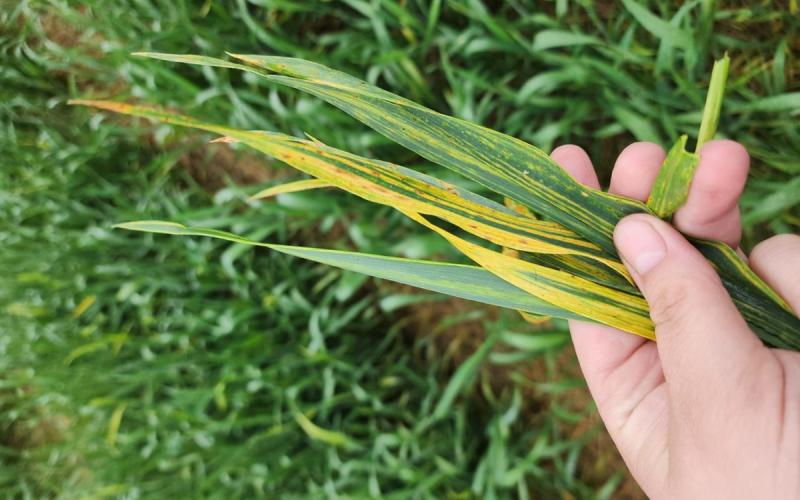Wheat Diseases
All Wheat Diseases Content

Crop Hour
SDSU Extension Crop Hour webinars provide valuable information for South Dakota crop producers to help them improve their profitability and prepare for the upcoming season.

Wheat
The SDSU Extension team provides unbiased, research-based information to help wheat growers make decisions to improve yields and profits.

Crops
During the growing season, SDSU Extension provides weekly production recommendations.
SDSU Extension programs help producers maintain healthy crops
August 26, 2025
Madalyn Shires puts on a lot of miles in the summer. As an assistant professor and SDSU Extension Plant Pathology Specialist, Shires traverses the state visiting research plots and educating crop producers on that research.

Aster Yellows Phytoplasma
Aster yellows is a phytoplasmal disease carried and introduced by aster leafhopper. It is known to infect over 80 different plant families, as the aster leafhopper has extremely broad feeding habits.

Wheat Streak Mosaic Virus Complex: Breaking the Green Bridge
As wheat harvest proceeds, it won’t be long until winter wheat planting is underway in South Dakota. To effectively reduce wheat streak mosaic virus, it is important to manage the green bridge effect to slow spread of disease in newly emerging wheat fields.

Volunteer Wheat and Kochia Management With Herbicides Will Likely Require Two Passes
Wheat curl mites, which carry wheat streak mosaic virus, use volunteer wheat and grass weeds as secondary hosts to infest recently planted winter wheat crops. Therefore, effective management of these plants before winter wheat planting is critical.

Keep Watch: Wheat Streak Mosaic Virus is Developing in South Dakota Fields
Wheat Streak Mosaic Virus has been reported in South Dakota wheat fields and is also a major wheat disease for Great Plains states in 2025. The virus is sweeping across the state and is rampant in winter wheat.

How to Use the South Dakota Mesonet Small Grains Tool
South Dakota Mesonet Small Grains Tool is an easy-to-use and efficient tool that can help identify disease risks associated with wheat leaf rust, wheat leaf spot diseases, and Fusarium head blight.

Fusarium Head Blight Update: May 29, 2025
Fusarium head blight, also known as scab, is a fungal disease that infects wheat heads during flowering. Recent weather conditions across South Dakota have provided the environment needed for Fusarium head blight to begin infection.